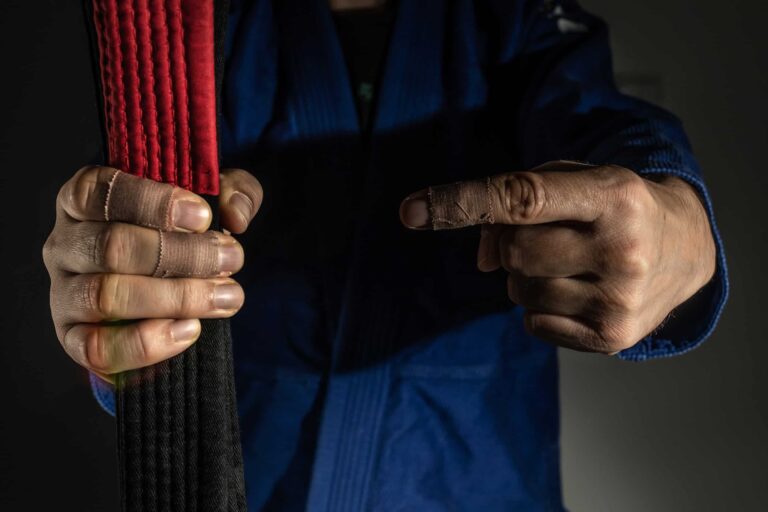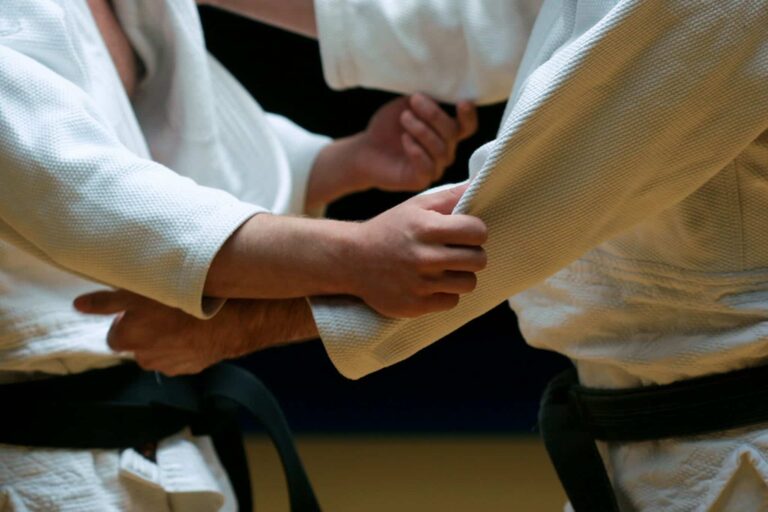How Tight Should BJJ Rash Guards Fit?

BJJ rash guards are tight-fitting compression shirts worn in BJJ and even more commonly in no-gi jiu-jitsu. Though they are designed to be tight fitting you might be wondering just how tight BJJ rash guards should fit, and why is it important?
A BJJ rash guard should fit tightly against your torso, letting you stretch it out about an inch. It should be neither baggy nor so tight that it restricts blood flow. Too loose, and it won’t protect you from mat burns or infection, but too tight and you won’t be able to move.
You need to find the right balance of tightness when choosing a BJJ rash guard. Most of the time the size of the rash guard would match the shirt size you would usually wear.
This is not always the case, however, but choosing the same size shirt you wear regularly is a good place to start. If you wear a large try that size out first. Then see if it fits the way a rash guard is supposed to.
How Tight Do You Wear a Rashguard?
You should wear your rash guard right against your skin. The fabric will move with you, so you don’t need to worry about it being restrictive. Rash guards for BJJ are usually made with six panels of fabric for a full range of motion.
If your rash guard is loose, it can’t protect you as well, and it may slip around on your body when you grapple. You might not get a burn from the mat, but the fabric of your rashguard can give you a rash if it’s too loose.
The best fit is one that will stretch out an inch or so from your body when you pull it, but instantly revert when you let go. You want to be able to move freely and have the rashguard move with your body, not against it.
If it’s so tight it’s cutting off your circulation, or you can’t move your joints all the way, then you need to go up a size. It should not be extremely difficult to put your rash guard on. So if it is very hard to take on and off its probably too tight.
Tight Fitting Rashguards Help Prevent Mat Burns
Jiu-Jitsu rash guards help you avoid mat burns on the areas of your body that they cover. This is why long-sleeved rash guards are a good idea, and why regulations state that rash guards have to cover your entire torso; they’ll cover more of your body thus protecting you more.
The layer of fabric held against your skin will keep the mat from rubbing off that surface layer of skin when you hit the ground.
Think of your rash guard as the equivalent of a bicycle helmet. You can certainly do the activity without it, but you’re taking on a huge risk every time you do. Wearing a rash guard will greatly reduce your mat burns, which will also reduce your risk of infections.
Rashguards Help Protect Against Skin Infections
Another good reason to wear a rash guard is to prevent the spread of infections. Wearing a rash guard is one of the main ways grapplers can avoid staph and ringworm. Skin-borne diseases like ringworm are common in BJJ. Rash guards help prevent you from spreading it and from catching it.
The disease is so common because sparring partners are nearby, mat burns are highly likely, and the mats hold onto dirt and germs. Even if the mats are cleaned regularly, germs can stick around for a long time. It’s not uncommon for small cuts and mat burns to turn into nasty infections.
Conclusion
Your rash guard should feel like a second skin. It needs to be tight enough that it won’t slide around while you’re wrestling but loose enough to give you a full range of motion.
Good rash guards have moisture-wicking and anti-bacterial fabric to help keep your sweat away from your skin and lower your risk of getting an infection on the mat.
Whether you compete with a gi or without one, a BJJ rash guard can be an essential part of your uniform for practice and competition.





